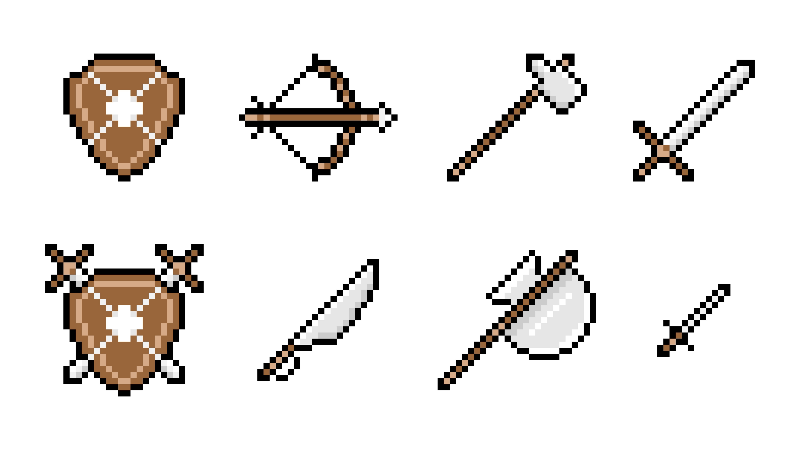Top Methods for Farming Warframe Plastids
By Yi Xiaomei | August 29th, 2018 | Categories: Warframe
As anyone who’s played the game for more than a couple of hours knows, Warframe is a farming game. This doesn’t mean you’ll be growing radishes Stardew Valley-style, but it does mean you’ll be spending a lot of your time running missions in an attempt to gather resources to build the best weapons, Warframes, and other equipment. As an uncommon resource used in dozens of both early- and late-game crafting recipes, Plastids are a much sought after component and it isn’t uncommon to see people forming teams just to farm them. So how can you rustle up some Plastids of your own? This guide will explain all the top methods of Warframe Plastids farming.
Table of Contents
How do I get started farming Warframe Plastids?
To start farming Plastids, the first thing you need to know is where to find them. Plastids can be found on Saturn, Uranus, Phobos, Pluto, and Eris, so you’ll have a good chance of finding at least a few if you run missions on any of those planets. You’re guaranteed to find Plastids by breaking open Plastid Carapaces: containers that resemble pale, spiky seashells that you can occasionally find on any of the planets listed above. More rarely, Plastids can also be dropped by killed enemies or found in general storage containers around the map. Technically, that’s all you need to know to get started. But how can you maximize your Plastids gain? Read on.
Where is the best place to farm for Plastids?
If you’re still in the process of unlocking all the planets on your star chart, you’ll find that Phobos is the first unlocked planet that drops Plastids on its missions. However, Plastid drop rates are quite low on Phobos and you likely won’t find very many per mission. Instead, Saturn and Uranus are the most efficient planets for farming Plastids, especially on their Defense and Survival missions. Saturn missions also come with the added bonus of dropping Orokin Cells, another rare resource necessary for building a number of the game’s most valuable items. With missions ranging from levels 21-36, Saturn is also very manageable for a team of high-level Warframes.
What team load-out is the best for farming Plastids?
If you really want to get the most Plastids per mission, you might want to look into forming a team specifically built for farming. You can do this by grouping up with friends who own the necessary Warframes or by finding a Plastid-farming team in the Recruiting section of game chat.
As for what roles you and your team members should play, the tried-and-true set-up for farming teams is one Nekros, one Hydroid, one Nova, and one Trinity. The Nekros’s job is to cast Desecrate and keep it up as often as possible. Desecrate causes slain enemies to drop additional loot, increasing the chance that they’ll drop Plastids. Next is Hydroid. His job is to equip the Pilfering Swarm augment mod (purchasable with Syndicate Standing from Cephalon Suda or New Loka) and cast Tentacle Swarm in areas of high enemy traffic, such as choke-points or near enemy spawns on Defense missions. With the Pilfering Swarm mod, Hydroid’s tentacles will cause grabbed enemies to drop additional loot, increasing their chances of dropping Plastids. Nova’s job is somewhat more complicated. She should equip the Overextended mod, which pushes her ability strength into the negatives. This synergizes with her fourth ability Molecular Prime, which normally slows enemies down but, with Overextended equipped, will now cause them to move faster. Though this may seem counter-productive, it can actually speed up farming missions by causing enemies to rush headlong into Hydroid’s tentacles and the team’s combined firepower. Finally, a Trinity can use her Energy Vampire ability to keep the team’s energy levels topped up, allowing them to use their abilities without a break.
Having a team build like this can vastly increase the number of Plastids gained per mission, not to mention speed up the mission time overall. If you can’t recruit all the Warframes necessary, don’t worry; a Nekros or Pilfering Swarm Hydroid alone can still increase your Plastids gain significantly.
Is running missions the only way to get Plastids?
If you don’t have the time or patience to run lots of missions, another option is to use Resource Extractors to collect components such as Plastids even while you’re away. Extractors come in 4-hour and 8-hour varieties, called Titan Extractors and Distilling Extractors, respectively. The blueprints for each can be purchased for 50,000 credits on the Warframe Market. Once built, Extractors can be deployed onto any planet where all mission nodes have been unlocked. They’ll accumulate resources whether you’re playing the game or not, making them great for those of us without much time to play during the week. Though they won’t collect them every time, Extractors deployed to Saturn and Uranus have the highest chance of returning Plastids. To deploy your Extractors, first build them in your Foundry, select your desired planet, and then click “Deploy Extractor” on PC, press R3 on PS4, or click the right stick on Xbox One. This will bring up a prompt to select your Extractor and deploy it to the planet. After either four or eight hours, you’ll be able to select “Claim Now” to retrieve your extractor and any resources it may have gathered.
Alternatively, you can buy bundles of 300 Plastids on the in-game market for 30 Platinum. However, given Warframe Platinum can be spent on much more valuable purchases, we don’t recommend this option unless you’re really rolling in dough.
Plastids, Please!
With their low drop-rate and high crafting demand, Warframe Plastids farming can be a real pain. However, with this guide, your Plastid farming can be faster and more efficient, meaning you’ll have more time to… well, farm for all the other things you need! Choose the right planets, the right team, and the right strategies and you’ll never have to worry about running out of your precious Plastids again. Or at least, you won’t have to worry about it as often as other players.
Read more about the latest Plastids Farming Guide here.















